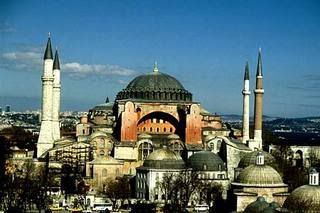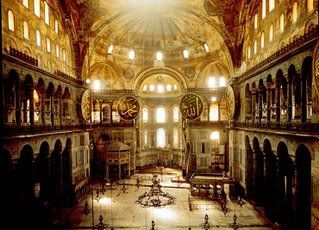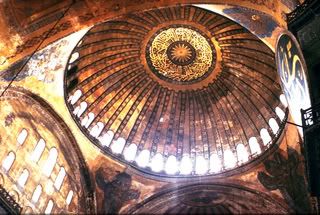ca. 500 CE
Byzantine
--In Ravenna, Italy, on the western end of the Byzantine Empire, Justinian commissioned San Vitale, an impressive Christian church with a "Greek Cross" floor plan. The inside walls of San Vitale are highly decorated and on the north wall of the apse is the Justinian Mosaic. At the center of the mosaic is Justinian shown priest-king, haloed and garbed in purple and gold, carrying a paten or a large golden bowl containing the bread for the Sacrament. Closest to Justinian on the right is the Bishop Maximianus and indeed his is the only name that appears in the Mosaic. His importance is labeled also by the golden robe and scarf bearing the cross. Maximianus and the other clergymen are identified also by the items they carry: a cross, a book, and a thurible. To the left of the Emperor are several soldiers, denoted by their lances and by the shield one of them carries which bears the Greek Letters X and P, or chi-ro, a monogram for Christ. To show perspective in this piece, the mosaicist uses a simple method of overlapping: every man's foot overlaps the foot of his inferior, putting Justinian and Maximianus in front and all other figures behind them.
Click to view larger images.
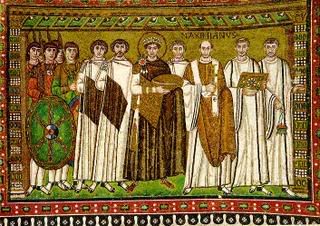
(Justinian Mosaic)
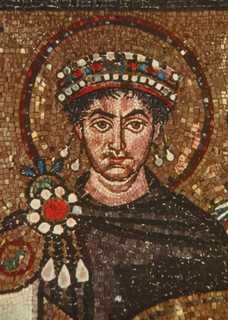
(Detail of face of Justinian)
